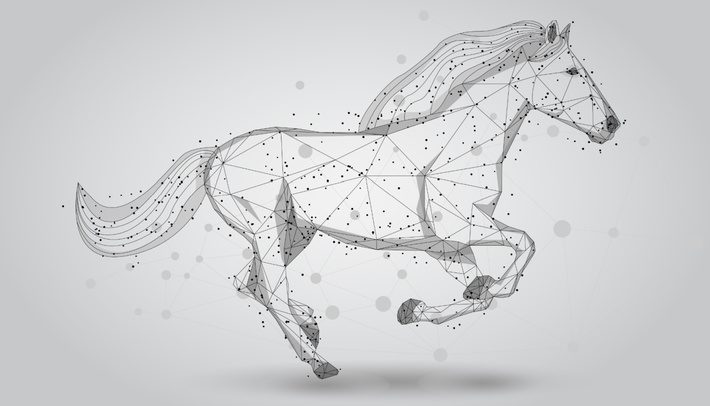
The year 2021 may well see a turn in the trajectory of AI. As DataRobot notes in its predictions for the new year, “Within the enterprise, we finally expect a wholesale move from ‘Experimental AI’ to ‘Operational AI,’ as organizations must move out of the lab and beyond pure experimentation.” In fact, Gartner is forecasting that 75% of enterprises will shift from piloting to operationalizing AI by the end of 2024, driving a 5x increase in streaming data and analytics infrastructures. (1)
Why must they? There are many reasons, including the obvious disruptions that COVID-19 has engendered. But there is an argument that these disruptions were simply hastened by the pandemic. Changes in customer behaviors brought about by the internet giants were already in play. And, of course, those changes were fostered by Amazon’s and others’ extensive use of AI and other advanced technologies behind the scenes.
From our perusal of the publications offering predictions in this space we see agreement that AI will be a bigger disruptor to business than the Internet was. Again, we ask: why? The simple answer may be that it offers such a wealth of opportunities to make better decisions, unearth hidden relationships previously unnoticed among critical data, and offer the agility and automation that our speed-obsessed times demand for competitiveness. AI is the new horsepower.
The use of AI by business is expected to rise exponentially and to be “institutionalized.” This development will likely be slowed by resistance to change within organizations unless leadership understands the interdependencies of AI/Human collaboration required to take advantage of AI’s capabilities. We have found that without that understanding AI projects are not appreciated or adopted.
Stages of AI Development
The International Institute for Analytics has characterized the stage of AI that we are in now as Analytics 4.0. It sees the earlier phases as those comprised of 1.0 – traditional approaches; 2.0 – big data; 3.0 – data economy; and now, 4.0 – automated and embedded analytics. It postulates that “Advanced analytics is increasingly an assemble-and-integrate discipline, requiring few if any data scientists for run-of-the-mill AI use cases and behaving in ways consistent with the application suites managed by IT professionals.”(2)
The lead horse in the AI stable is machine learning at this time. DataRobot postulates that “Machine learning is poised to become the main driver for intelligent automation and is going to be a primary focus in 2021.” Why? “Because it excels at tasks that are hard to define with step-by-step rules. Machine learning can be applied to numerous business scenarios in which an outcome depends on hundreds of factors — factors that are difficult or impossible for a human to monitor.”(3)
The customer remains at the center of business processes: what does she want: what services in addition to what products? Demand prediction, product recommendation, and pricing are just a few of the functions that consumer-oriented companies have to command to satisfy customer expectations. Machine learning has the power to assess all of these factors, drawn not just from customer purchase history but from outside influences garnered from social media, trends, and purchase patterns over time. It can then predict outcomes and prescribe recommendations for action.
Beyond Machine Learning
Information Week published some of Gartner’s leading predictions for 2021, based on its research (4):
- Automated governance will become key for controlling AI applications
- Edge-based AI will crunch neural networks down to their essence
- Facial recognition will become a dominant AI-based, contactless, authentication technology
- Robotics will bring reinforcement learning into AI’s mainstream
- Quantum computing will find its first compelling AI application
Gartner’s research also forecasts these outcomes (5):
Cloud-based AI: It is expected to increase 5x between 2019 and 2023, making AI one of the top workload categories in the cloud.
Data marketplaces and exchanges: 35% of large organizations, up from 25% in 2020, will be either sellers or buyers of data via formal online data marketplaces by 2022.
2020 Achievements Using AI
We cannot leave you with only predictions for the future of AI business use. Google Brain founder Andrew Ng summarized the most notable achievements for the common good in the year 2020. Here are a few of the many he identified (6):
- BlueDot, which analyzes news reports for significant events, detected the nascent pandemic several days ahead of the global health monitors and sent an early warning to its customer.
- The government of Togo trained a model to identify regions of extreme poverty in satellite imagery. It used the output to guide distribution of relief funds to those most in need. · For people working from home, videoconferencing companies trained models to filter background noises and virtually transform pajamas into business attire.
- Moderna, a U.S. biotech company, whose vaccine was approved by the U.S. Food and Drug Administration in December, used machine learning to optimize mRNA sequences for conversion into molecules that could be tested.
- For people working from home, videoconferencing companies trained models to filter background noises and virtually transform pajamas into business attire.
At the start of 2021, perhaps the main question for your company is, Will you be riding the AI horse into the future?
(1) https://informationweek.com/big-data/ai-machine-learning/top-10-dat…
(2) International Institute for Analytics PDF, “Analytics 4.0: Automated & Embedded, ” October 2020
(3) https://www.datarobot.com/wiki/machine-learning/
(4) https://www.informationweek.com/big-data/ai-machine-learning/predic… (5) https://informationweek.com/big-data/ai-machine-learning/top-10-dat…; see also Gartner PDF, “Top Strategic Technology Trends for 2021”
(6) https://blog.deeplearning.ai/blog/the-batch-biggest-ai-stories-of-2…
